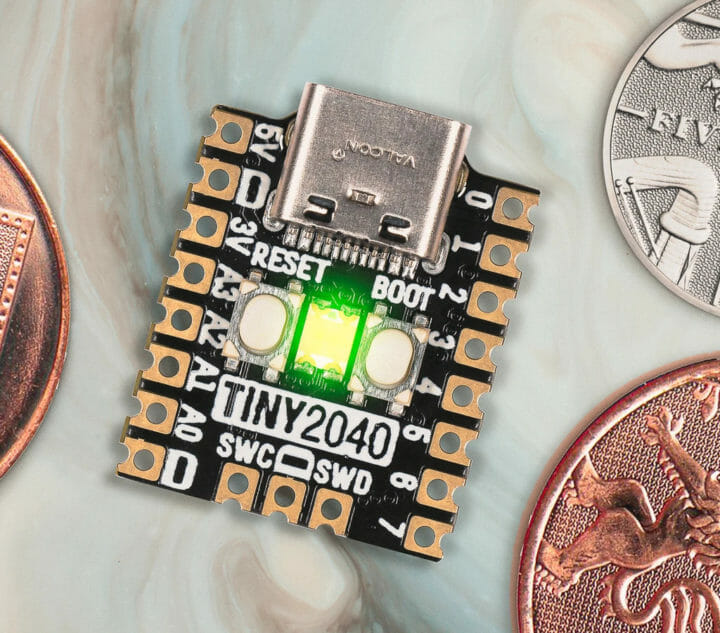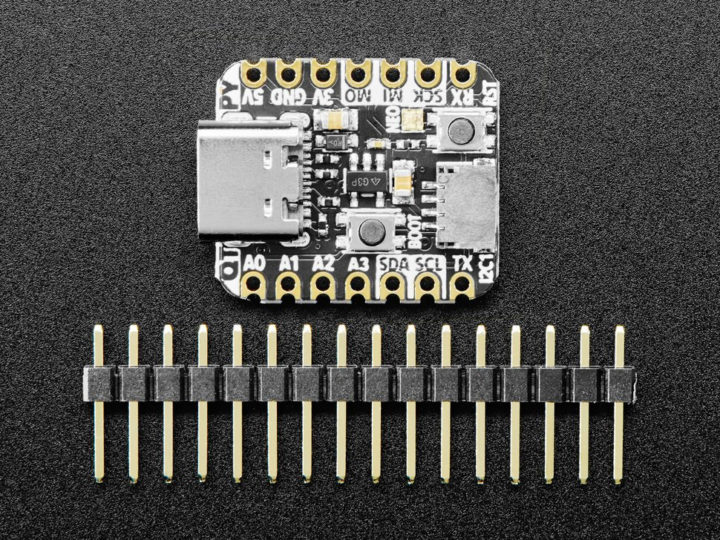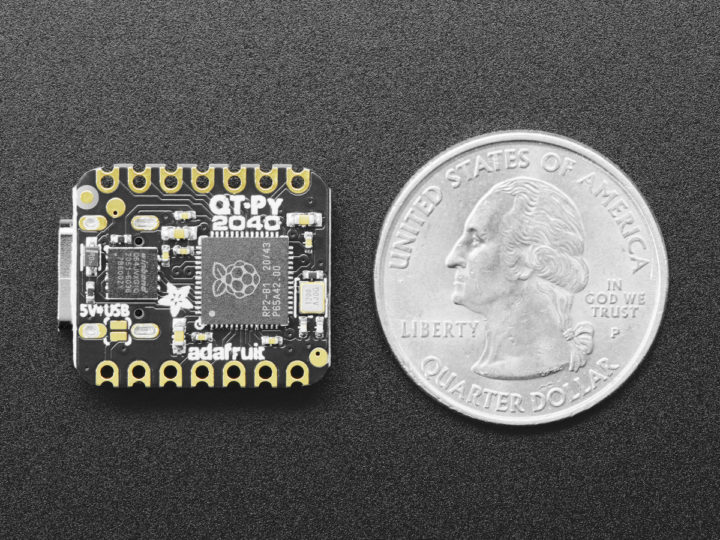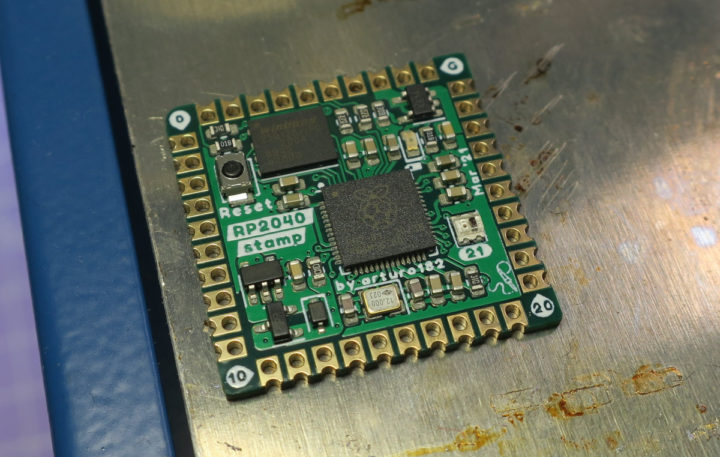The Raspberry Pi Pico officially board for RP2040 MCU has a lot of free space on the PCB. So when third parties made their own board they either added features like camera, display, and sensors as found on like on Arducam Pico4ML board, while others “cut the fat” to the minimum.
Some of the tiniest Raspberry Pi RP2040 boards are Pimoroni Tiny 2040 & Adafruit QT Py RP2040, both of which come with the dual-core Cortex-M0+ MCU, a USB-C port, two buttons, some I/O ports, and not much else.
Tiny 2040
Pimoroni Tiny 2040 specifications:
- MCU – Raspberry Pi RP2040 dual-core Cortex-M0+ microcontroller@ up to 133Mhz with 264kB of SRAM
- Storage – 8MB QSPI flash
- USB – USB Type-C port for power, data, and programming
- I/Os – 2x 8-pin castellated and through holes for 12 I/Os pins including 4x analog inputs, SPI, I2C, UART, 5V, 3.3V, and GND
- Debugging – 3-pin SWD interface
- Misc – Boot and Reset buttons, user-programmable RGB LED
- Power Supply – 3V to 5.5V
- Dimensions – 22.9 x 18.2 x 6mm
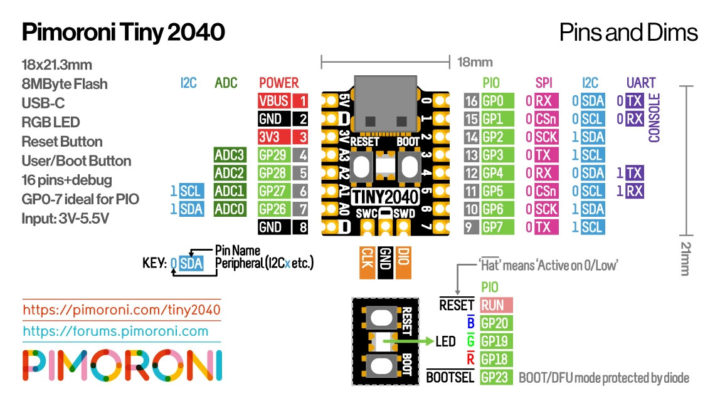
Besides its small size, it also comes with four times more storage than the Raspberry Pi Pico. It can be programmed with MicroPython, CircuitPython, the C SDK, just like any other RP2040 boards.
Price is a bit on the high-side right now, as Pimoroni sells it for £8.40, or around $11.5. But maybe it’s just a sign of times, as the famous “$2 Bluepill board” based on STM32 MCU is now often going for$7 shipped.
Adafruit QT Py RP2040
The Adafruit QT Py RP2040 board is fairly similar to the Tiny 2040, but does offer a slightly different set of features:
- MCU – Raspberry Pi RP2040
- Storage – 8MB QSPI flash
- USB – USB Type-C port for power, data, and programming
- I/Os
- 2x 7-pin castellated and through holes for 11x I/Os pins 4x ADC’s, 1x I2C port, SPI, UART, PWM, 6x GPIOs
- Stemma QT connector with I2C
- Misc – Boot and Reset buttons, user-programmable RGB Neopixel LED
- Power Supply – USB, V-in pad
- Dimensions – 23.5 x 17.5 mm
If the board has been designed to follow the Seeeduino XIAO form factor, and the company recommends MicroPython or CircuitPython programming. The main difference with Tiny 2040 is with regards to I/O, as QT Py RP2040 offers fewer I/O, but does add a QT I2C connector.
The Adafruit board sells for $9.95 when it’s in stock. I’m writing this article because I subscribed to get notified at launch. The board was in stock yesterday, but those little boards appear to be quite popular despite competition from the likes of ESP8266 or STM32, and the board is now out of stock. I noticed the company would also only sell a maximum of two boards to customers.
Even smaller! Meet the RP2040 Stamp
As a bonus item, if you’d like a small RP2040 board without USB, which I would technically call a “module”, Solder Party (Arturo182) is working on the RP2040 Stamp that will ship with 16MB flash, the maximum supported by the MCU. It’s just not available yet.

Jean-Luc started CNX Software in 2010 as a part-time endeavor, before quitting his job as a software engineering manager, and starting to write daily news, and reviews full time later in 2011.
Support CNX Software! Donate via cryptocurrencies, become a Patron on Patreon, or purchase goods on Amazon or Aliexpress


